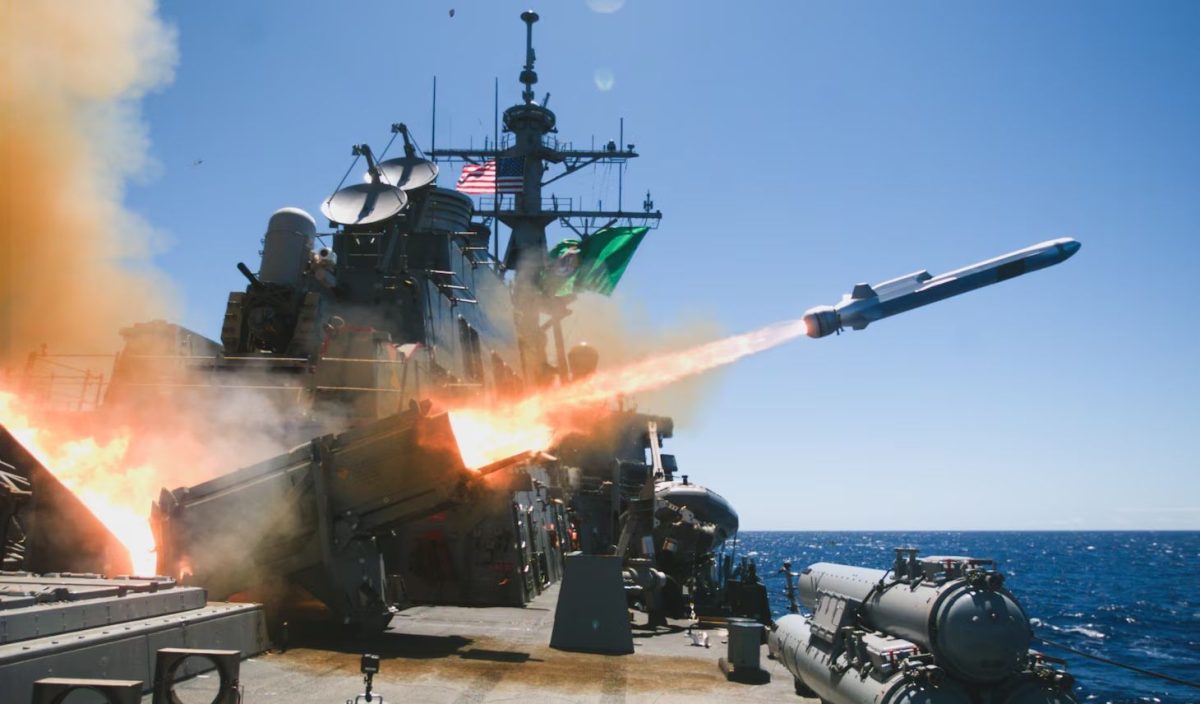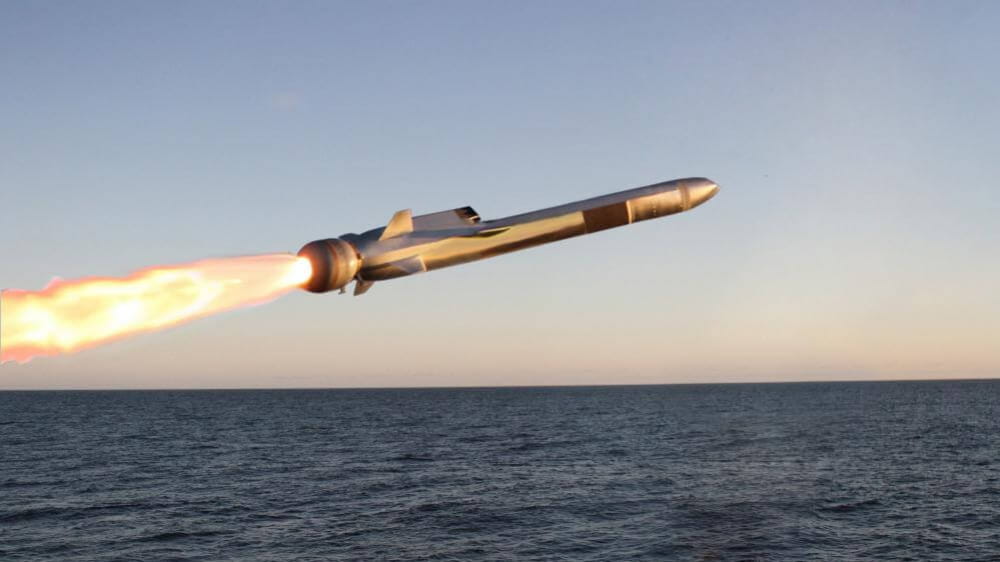An Arleigh Burke-class destroyer of the US Navy fired the Naval Strike Missile (NSM) during the Rim of the Pacific (RIMPAC) military drills held off the coast of Hawaii, the service has finally confirmed.
The US Navy released a statement on October 23, 2024, that read: “Among the flurry of fleet activities in the recent Rim of the Pacific (RIMPAC) exercise in Hawaii was a milestone that Naval Surface Warfare Center, Port Hueneme Division (NSWC PHD) spearheaded — the first demonstration firing of a Naval Strike Missile (NSM) from a U.S. Navy destroyer.”
USS Fitzgerald participated in a sinking exercise (SINKEX) on July 18, during the RIMPAC multi-national drills off the coast of Hawaii. The missile was fired at a decommissioned amphibious vessel located roughly 50 nautical miles off the shore of Kauai. Although reports of the NSM’s firing had previously surfaced on the internet, the confirmation by the US Navy was awaited.
To enable the ship to fire the Naval Strike Missile, USS Fitzgerald was equipped with the first Over-the-Horizon (OTH) Weapon System, a long-range surface-to-surface warfare system that launches NSMs.
The primary components of this system are the operator interface console, the launcher, and a navigation adaptor, which is needed for the system to work with the destroyer.
The service stated that the first Over-the-Horizon (OTH) Weapon System was installed on the destroyer USS Fitzgerald (DDG 62) by NSWC PHD and its partners under a tight schedule.
“We were expecting a great deal of roadblocks due to the compressed timeline, but everyone came together to accomplish this monumental event,” said Todd Jenkins, platform integration lead with NSWC PHD in San Diego.
Following the OTH’s installation, NSWC PHD provided crew training and assisted with system testing while on the go. “USS Fitzgerald launched its first NSM from the OTH. The NSM successfully searched the target area, detected and prosecuted the target,” the US Navy said in the official statement.
The US has equipped its Independence-class littoral combat ships with the NSM. One of these ships, the USS Gabrielle Giffords, fired off a Naval Strike Missile at a target ship for a SINKEX in the Pacific in October 2019.
The US Marine Corps will also use the NSM as part of the Navy/Marine Expeditionary Ship Interdiction System (NMESIS), which allows the Marines to fire anti-ship missiles from land by deploying an NSM launcher unit atop an unmanned mobile launch platform based on Joint Light Tactical Vehicle (JLTV).

The latest confirmation from the Navy comes as it has been looking for ways to improve missile payloads and launch options to boost its firepower amid the looming threat of a full-blown war with China in the Indo-Pacific.
A stealthy, long-range anti-ship missile like the NSM would be crucial to defeating the sophisticated Anti-Access/Area Denial (A2/AD) along the Chinese coast, which includes several highly accurate land-attack cruise missiles (LACMs) and anti-ship cruise missiles (ASCMs) on various air, naval, and ground platforms.
The NSM provides the ship with the over-the-horizon attack option, allowing the crew to track and eliminate incoming anti-ship missiles at a safer range.
Moreover, the missile will be able to destroy a Chinese missile, which would be particularly useful against gun-type close-in weapon systems, such as Phalanx CIWS or the Chinese Type 730, which typically fire on predicted paths.
Moreover, the integration of the NSM on the Arleigh-Burke class vessel is significant as it aligns with the overall US strategy of assembling a stockpile of anti-ship missiles.
What Is The Naval Strike Missile (NSM)?
The Naval Strike Missile (NSM), developed by the Norwegian company Kongsberg Defence & Aerospace (KDA), is an anti-ship and land-attack missile.
Raytheon has teamed up with Kongsberg Defence Aerospace to produce the NSM launchers in the United States and is also leveraging its vast supply base to manufacture the missile and other parts in the country.
With a range of about 100 miles, the NSM is a subsonic, sea-skimming, precision cruise missile designed mainly to destroy enemy ships. It is a stealthy design that uses an image infrared seeker and GPS-assisted inertial navigation system (INS) guidance. The former is used to reach a general target region, while the latter is used for terminal engagement with the target.
The weapon can automatically distinguish between the intended target and other objects by using an internal database of representative ship types. This provides it with a high degree of precision and significantly reduces its vulnerability to electronic warfare tactics and countermeasures.
Due to its passive nature, the seeker is not susceptible to jamming by radio-frequency electronic warfare. Additionally, the NSM makes erratic motions during its terminal stage of flight to help dodge opposing close-in defensive systems.
The NSM was built with a smaller radar signature to allow it to attack near the surface in sea-skimming mode—basically below the aperture of many ship-based radars.
The missile is propelled to its target at high subsonic speed by a turbojet sustainer engine after being launched into the air by a solid rocket booster that is jettisoned upon burning out. This allows the multipurpose blast/fragmentation warhead to do its job, which in the case of a ship target means impacting the ship at or near the water line.

Some experts believe that the US Navy could swap out the Harpoons for the NSM in the Arleigh Burke-class destroyers, which would also provide the service with a stand-off capability, albeit with a smaller warhead than the Harpoon.
There is a widespread belief that inducting a new anti-ship missile would reduce the dependence on already vulnerable naval and air assets, given China’s huge ‘home advantage’ and, conversely, the US ‘away disadvantage’ in case of a potential conflict over Taiwan.
The missile has been garnering significant attention worldwide. For instance, the Royal Australian Navy’s HMAS Sydney successfully test-fired the NSM during RIMPAC 2024. The vessel reportedly simulated the sinking of the Ex-USS Tarawa LHA1 ship.
At the time, the reports suggested that the NSM had replaced the aging Harpoon weapon system onboard HMAS Sydney and would eventually be introduced onto the remaining destroyers.
Similarly, the Norwegian frigate HNoMS Otto Sverdrup fired an NSM missile at a decommissioned ship in the Norwegian Sea in June 2023.
Australia, the Netherlands, Norway, Poland, the UK, the US, and Belgium are the missile’s current operators. Several other countries, including Canada, Germany, Indonesia, Latvia, Malaysia, Romania, and Spain, are in various stages of purchasing it.
- Contact the author at sakshi.tiwari9555(at)gmail.com
- Follow EurAsian Times on Google News




